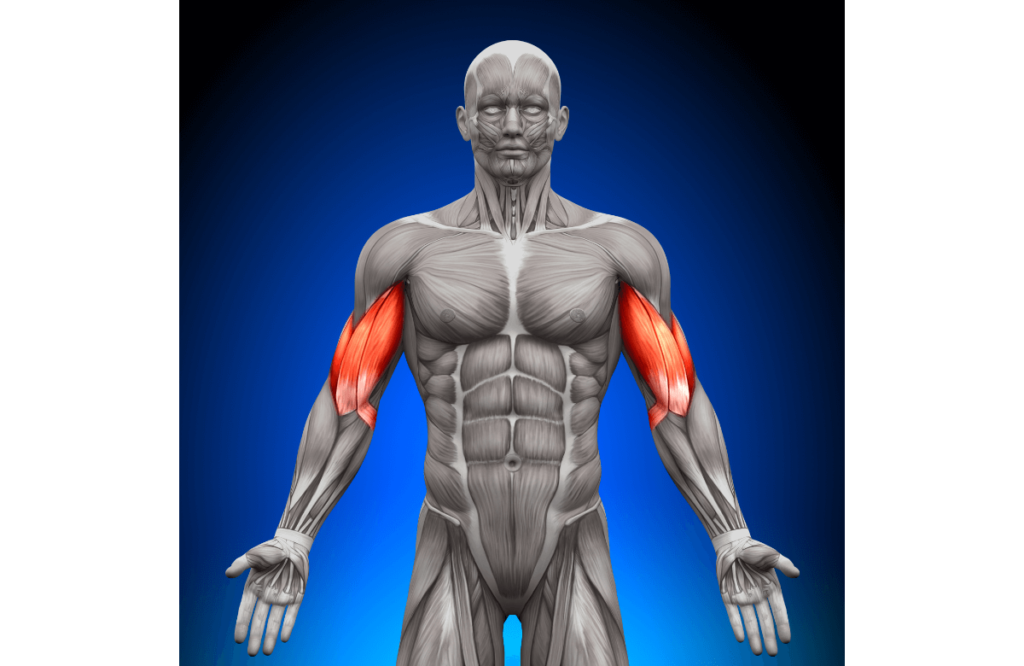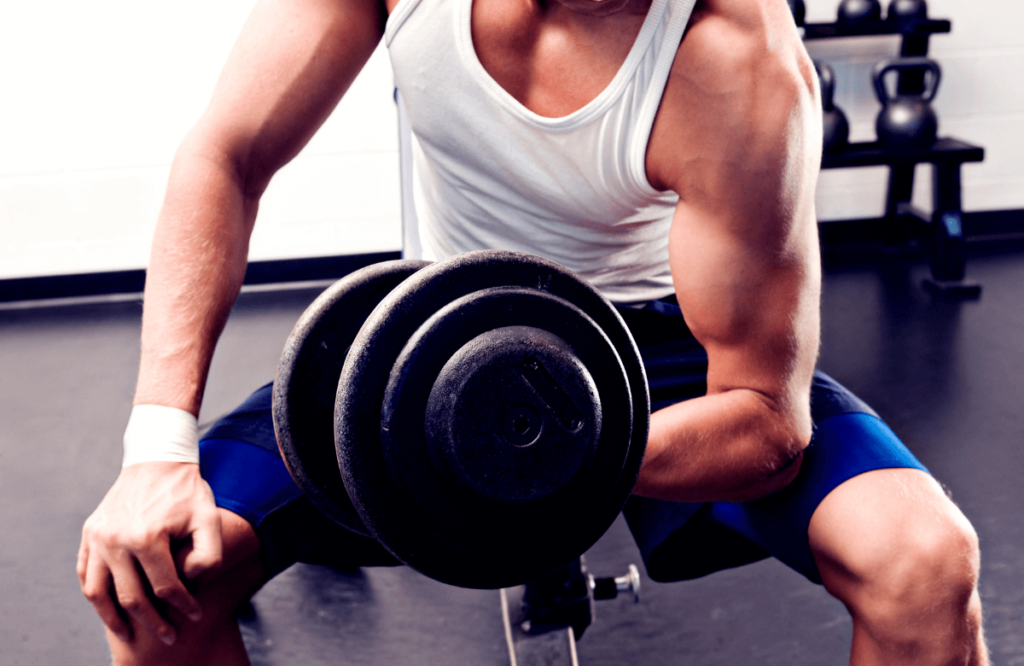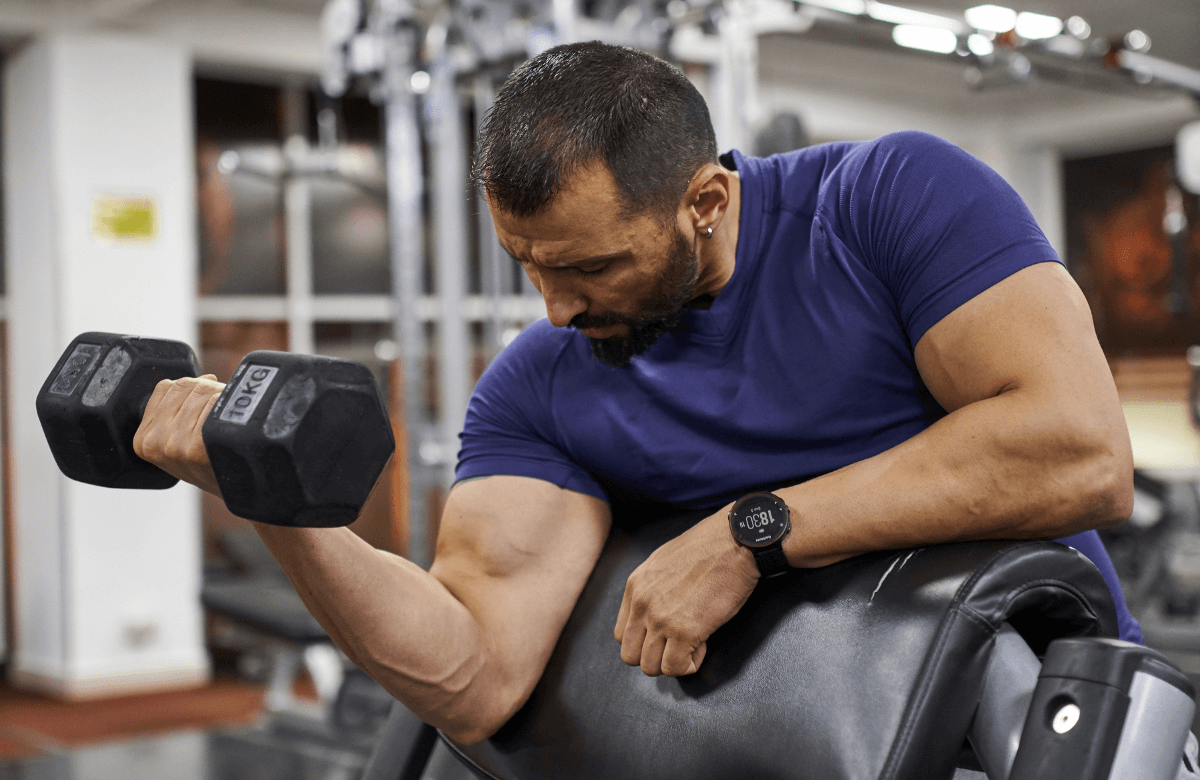If you’re serious about building muscle strength, then you know that working all muscle groups is essential. Serious athletes often have days dedicated to specific muscle groups or exercise types, such as cardio, leg, and arm days. And when working on arm muscles, the ever-popular bicep curl is a great option. But only if you’re doing them correctly.
Join us as we learn more about bicep curls, discuss some common mistakes, and describe the correct form for bicep curls.
Jump to:
- What Is a Bicep Curl?
- What Muscles Do Bicep Curls Work?
- Common Mistakes You Might Be Making
- How to Do Biceps Curls the Right Way (A Step-By-Step Guide)
- How Many Bicep Curls Should I Do?
- When and How Often Should I Do Bicep Curls?
- Different Methods to Do a Bicep Curl
- What’s the Best Method to Perform a Bicep Curl?
- Bicep Curl Variations
- FAQs About Bicep Curls
What Is a Bicep Curl?
Whether a beginner or expert, the bicep curl is an excellent option for arm day. Sometimes called arm curls, the bicep curl or dumbbell curl is a common weight-strengthening exercise that strengthens the upper and lower arm muscles.
It’s named for the curl motion you make with your arm when lifting weight and its focus on the biceps muscle. You can use a dumbbell, or you can also use kettlebells, a curl bar, resistance bands, or cable machines when doing bicep curls.
What Muscles Do Bicep Curls Work?
As you might expect, bicep curls primarily work the bicep muscles, hence the name. The bicep is the upper muscle on the front of the arm. The bicep curl also works the triceps, the muscle on the back of the upper arm, and the lower arm muscles. These muscles include the biceps brachii, brachialis, and brachioradialis in elbow flexion.

Common Mistakes You Might Be Making
Although the bicep curl seems relatively straightforward, there are some common mistakes that you could be making. Read each carefully to ensure you’re doing the movement right. If not, make necessary changes to avoid issues in the future.
Going Too Fast
One of the most common mistakes we see in any movement, including bicep curls, is going too fast. As you lift the weights, focus on proper form in a smooth motion. Spend as much time lifting the dumbbell as you do lowering it.
In fact, you can gain more muscle definition by slowly lowering the dumbbell. It increases time under tension, which is where muscle growth typically happens.
Incorrect Elbow and Shoulder Position
Incorrect elbow or shoulder position could lead to muscle strain or injury. Your upper arms should stick close to your body and shouldn’t move. You’ll hinge at the elbow joint and only move your lower arm up and down. If your elbow moves away from your body or backward, you are lifting too much weight.
Additionally, your shoulders should not move when doing a regular curl. It’s tempting to shift your shoulders forward to help the weights reach your shoulders before you lower back down. But if there’s shoulder involvement in the movement, you’re likely letting your abdominal muscles collapse too, setting yourself up for injury.
Cheating Using Momentum
Swinging, twisting, or heaving your lower body or hips to build speed during bicep curls can be tempting. But don’t do it. Using momentum to finish your bicep curls is cheating and won’t give you as much muscle strengthening as you can with proper form. It can also cause injury because your body often compensates with other muscles, which could lead to a torn muscle, overused tendons, or another injury.
Improper Range of Motion
Improper range of motion usually means not fully extending through the entire curl. Multiple studies with both legs and arms found that lifters who only did the bottom portion of lifts showed greater muscle growth over those who only lifted the upper part. These studies show how impactful the lower section of the bicep curl is. So, if you’re cutting your range of motion by skipping the bottom portion of the curl, you’re severely impacting your muscle growth.
Being Too Stiff
Maintaining proper and solid form is essential, but being too stiff or rigid can cause injury. Your core and arms should be tight in preparation for the movement, but if you don’t allow natural joint movement and movement progression, you’re apt to tear something.
If you find yourself being too stiff in your movements, try taking a deep breath, holding it for 5 seconds, and then releasing it slowly as if you’re blowing through a straw. It’s a natural method of relaxing your entire body and can help you reset so you can begin the motion again.
Too Heavy or Too Light
Just with any weightlifting venture, getting the correct weight is crucial. A super light weight for you will mean little to no muscle growth. On the other hand, using dumbbells that are too heavy contributes to poor or incorrect form, which puts excess stress on the muscles and could cause injury. Sometimes you can use heavier weights when doing fewer reps, but listen to your body and cease the movement when you’ve maxed out.
Experiment with weight range and be honest with yourself. If it’s too heavy, stop and use a lower weight.
Lack of Control
Controlling the lift throughout the curl movement is vital to maintaining muscle growth and reducing the risk of injury. Lack of control during the descent or bottom portion of the curl is critical in building appropriate muscle. Also, a lack of control during any part of the curl increases the risk of injury.

How to Do Biceps Curls the Right Way (A Step-By-Step Guide)
So, now that we’ve discussed the things to avoid, let’s discuss how to do a bicep curl properly. By following this step-by-step guide, you will soon be an expert in curling and biceps exercises.
Step 1: Hold the dumbbell in one or both hands with a supinated or underhand grip, with feet about shoulder-width apart.
Step 2: Engage core muscles before lifting the dumbbell.
Step 3: While holding the dumbbell, relax your arms at the side of your body with palms facing outwards. You’ll want to keep your body stationary when you lift, so prepare yourself to minimize body movement before lifting.
Step 4: To lift the dumbbell, keep your biceps tight and elbows close to the body. Lift the weights with the dumbbells touching the shoulders at the top of the lift. Keep the shoulders relaxed. While it’s tempting to squeeze your shoulder blades at the top of the movement, stay relaxed. Advanced lifters could also lift the dumbbell to the eye or forehead level.
Step 5: Exhale throughout the lift to keep muscles from getting tight.
Step 6: Slowly lower the dumbbells to the starting position, making sure you’re giving as much attention to the descent as you did to the ascent.
Step 7: Continue with the desired reps, staying within 3-5 reps of your max.
How Many Bicep Curls Should I Do?
How many bicep curls you should do depends on your fitness goals. In general, lifters should exercise their biceps 2-3 times per week. More advanced bodybuilders and athletes might aim for 4-6 sets of 6-12 reps.
Most people seeking biceps strength will shoot for 3-4 sets of 10-12 reps. And individuals that want to tone their muscles should try 2-3 sets of 12-15 reps daily.

When and How Often Should I Do Bicep Curls?
You can do bicep curls daily, but most do them 2-3 times per week to give them proper rest between sets. However, the time of day for exercise is not that important. If you choose to work your biceps daily, experts suggest not maxing out on weight limit or reps daily, which could easily lead to muscle strain or injury. Additionally, maxing out daily leads to overtraining, which is counterproductive to muscle growth.
If you’re looking for more effective repetitions, we suggest arm curls 2-3 times per week. This allows you to max out during your workouts with adequate days of rest between sets.
Different Methods to Do a Bicep Curl
Although the basic bicep curl is effective and works well to build and maintain muscle, you can use many different methods to do a bicep curl. Let’s look at each in more detail.
Dumbbell Bicep Curl
The dumbbell bicep curl is the standard method for bicep curls. The individual holds a dumbbell in one or both hands and completes the steps described earlier for the regular bicep curl. Lifters choose dumbbells over other pieces of equipment because you can use dumbbells for lighter weights that one can easily hold with one hand.
Barbell Bicep Curls
The barbell bicep curl uses a barbell or a curl bar instead of a dumbbell. Lifters may choose barbells over dumbbells because you can use heavier weights that would be unavailable with dumbbells.
The standard barbell curl is two-handed and requires both biceps to work together, which is one reason you can lift more weight.
Cable Machine Bicep Curls
The cable machine bicep curl uses a cable machine to perform the movement. In reverse grip, the individual holds onto the two balls of the curling handle and completes the curl movement. Individuals face the machine, stand as close to the machine as possible, and curl up using the curl handle.
The cable curl variation is beneficial because the pulley system provides constant time under tension and consistent resistance throughout the lift.
Band Bicep Curls
Band bicep curls use a resistance band instead of a dumbbell or barbell. You’ll use a long resistance band and step on the center of it. Grab both ends of the band, positioning your hands so there is little to no slack in the band when your hands are down and at your sides. So, when you perform the curl, the band offers tension for muscle growth.
Using a resistance band is beneficial because it makes the resistance easier at the bottom and more difficult as you raise your hands. If it’s too easy for you, grab a higher-tension band.
Weight Machine Bicep Curls
The weight machine bicep curl provides additional structure, similar to the cable machine, but doesn’t require the lifter to pull or lift a cable. The weight machine has a seat and bar where the individuals sit and curl the bar. The bar is attached to a set of weights with a cable, and the weight plates are lifted and lowered as the individual curls the bar.
What’s the Best Method to Perform a Bicep Curl?
The best method for bicep curls is highly dependent on your exercise purposes, muscle targets, and the equipment you have. Each of these methods can be beneficial. Try each scenario and decide which works best for your goals. You can even use more than one method type to increase the overall benefits of your bicep training regime.
We will say the most accessible version of a bicep curl is with a set of dumbbells. Anyone can get a few pairs of dumbbells and work their biceps at home or the gym. It can be more intimidating for beginning lifters to try other equipment, but it’s worth it to maximize your workouts.
Bicep Curl Variations
Many variations to the bicep curl can help shake up your workout. Researchers have found that using different variations increases not only the activation of the biceps brachii but also the coordination of the biceps brachii. Each variant of curl has subtle nuances that can have its benefits. Let’s look at each variation more closely.
Hammer Curl
The hammer curl uses a neutral grip with the palms facing each other rather than the supinated grip, like in the classic palms-up bicep curl. The hammer curl is a fantastic isolation exercise that targets a single muscle, the brachioradialis muscle located on the inside of your upper arm. Benefits of the hammer curl include improved grip strength, wrist stability, and increased bicep size.
Preacher Curl
The preacher curl is very similar and performed similarly to the standard bicep curl but uses the preacher bench. The bench lets you perform a bicep curl with proper form in a slower, controlled way with lighter weights and higher volume. This curl type is ideal for increasing your bicep size and provides good structure and safety while perfecting form.
You can also perform a preacher curl with a barbell, but you may need a lighter weight for this movement. It involves putting your arms out in front of you before lifting the barbell, and using a weight that’s too heavy could injure your back.
Spider Curl
The spider curl requires dumbbells and an inclined bench set at a 45-degree angle. Spider curls are similar to the basic bicep curl but require slow, controlled movements from start to finish. Benefits of the spider curl include isolating the arm muscles throughout the lift, providing for a full range of motion, and keeping your muscles under constant tension.
Zottman Curl
George Zottman developed this variation to focus on strengthening the biceps, brachialis, and forearm muscles in one exercise. Lifters doing the Zottman curl raise the dumbbell to the shoulders with their palms facing the shoulders. Then they rotate their hands and dumbbells until the palm faces outwards and lowers the dumbbell. The main benefit of the Zottman curl is the ability to work on the forearms too, which is possible with other variations.
Concentration Curl
The concentration curl focuses on each bicep separately from a seated position. You lean forward with your elbow resting on your thigh and raise each dumbbell with your palm facing up. It’s similar to a preacher curl but has slightly less stability.
FAQs About Bicep Curls
After reading thus far, we hope you know more about bicep curls, how to do them correctly, their benefits, and some different methods and variations. But if you still have some questions, here are some of the most frequently answered questions we see. Keep reading to find more answers.
Are Bicep Curls and Hammer Curls the Same Thing?
Yes and no. The hammer curls are a variation of a bicep curl. But a hammer curl is not the same thing, nor is it done using the same form or steps as the regular bicep curl.
The main difference between the aforementioned hammer curl variation and the alternative bicep curl exercise is the placement of the palms. In the classic bicep curl, the palms are facing toward the ceiling or shoulder in a supinated grip. The hammer curl uses a neutral grip with palms facing each other.
Are Bicep Curls Effective?
Bicep curls very effectively build muscle strength in the upper and lower arm muscles. Lifters can use bicep curls to strengthen and tone their biceps and other arm muscles. However, many factors can change the effects of the bicep curls, including weight limits, reps, and variations chosen. Experimenting with these factors can help you find the perfect combination and training routine for your exercise goals.
Is It Better to Do Bicep Curls Standing or Sitting?
Doing bicep curls while standing or sitting depends on your strength training goal. Standing bicep curls require more core activation, which can be helpful for whole-body strength training. In contrast, sitting bicep curls only require the activation of arm muscles, which targets arm and biceps muscle growth and strength.















